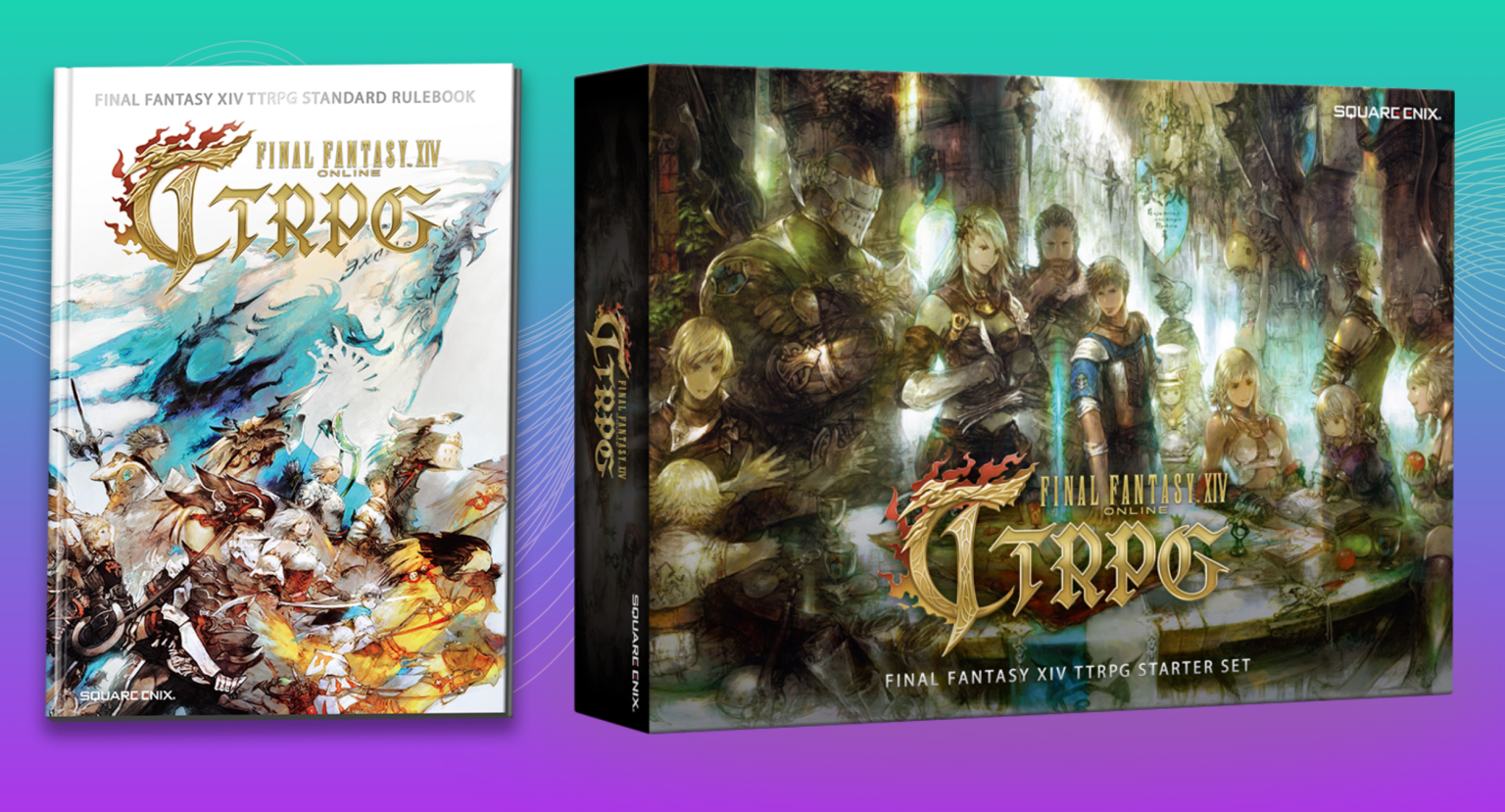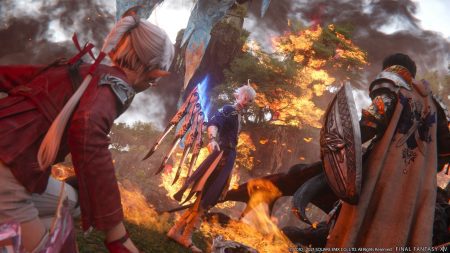Can you take the award-winning MMORPG to your table? Yes. Should you? Hmm.
The Final Fantasy XIV tabletop RPG was released to little fanfare outside of some fairly specific spheres. Square Enix was clearly not fully invested in pushing this out, and likely planned on making this a somewhat minor release to coincide with a new expansion pack of the online FFXIV MMORPG. Despite this, the TTRPG books sold shockingly well, with both the Starter Kit and base rulebook selling out, and requiring two waves of production (first in May 2024, and then in February 2025), though we don’t know how many copies were produced in each wave.
That book has made its way to my table, and I’ve been thumbing through it for weeks now. After some play with my friend groups — and as online simulators start to generate more content — I feel somewhat confident in asking; is the Final Fantasy XIV TTRPG worth trying with your friends?
System Overview
Final Fantasy XIV TTRPG is a d20 system (similar to Dungeons & Dragons) where players roll a 20-sided die to determine accuracy, checks, and how the environment reacts to you. Once that die is rolled, other dice—this system prefers a d6—can help you tell stories by determining damage in combat or random events. Players can gain advantage (a second d20 dice where you take the better result) or a disadvantage (a second d20 where you take the worse), or gain numerical bonuses or penalties to their roll to give them an edge on success.
The system is heavily inspired by the actual FFXIV MMORPG, as it is class-based. Players can select one of 13 Jobs to play, divided as Tanks (Paladin, Warrior, Dark Knight), Healers (White Mage, Astrologian, Scholar), and DPS, also known as “Damage Per Second,” or the high-damage classes in the MMORPG (Monk, Dragoon, Ninja, Bard, Machinist, Black Mage, Summoner). Classes boast a large array of unique abilities, but offer no customization opportunities outside of gear selection. Instead, the game has a built-in system that allows you to swap from one Job to another—either through Game Master (GM) fiat, specific events in the campaign, or any other reason.
Outside of combat, much like DnD, players can roll checks to influence their environment, partake in downtime activities (or Personal Quests, as this system describes it), and utilize their class abilities in unique ways to help give them an advantage.
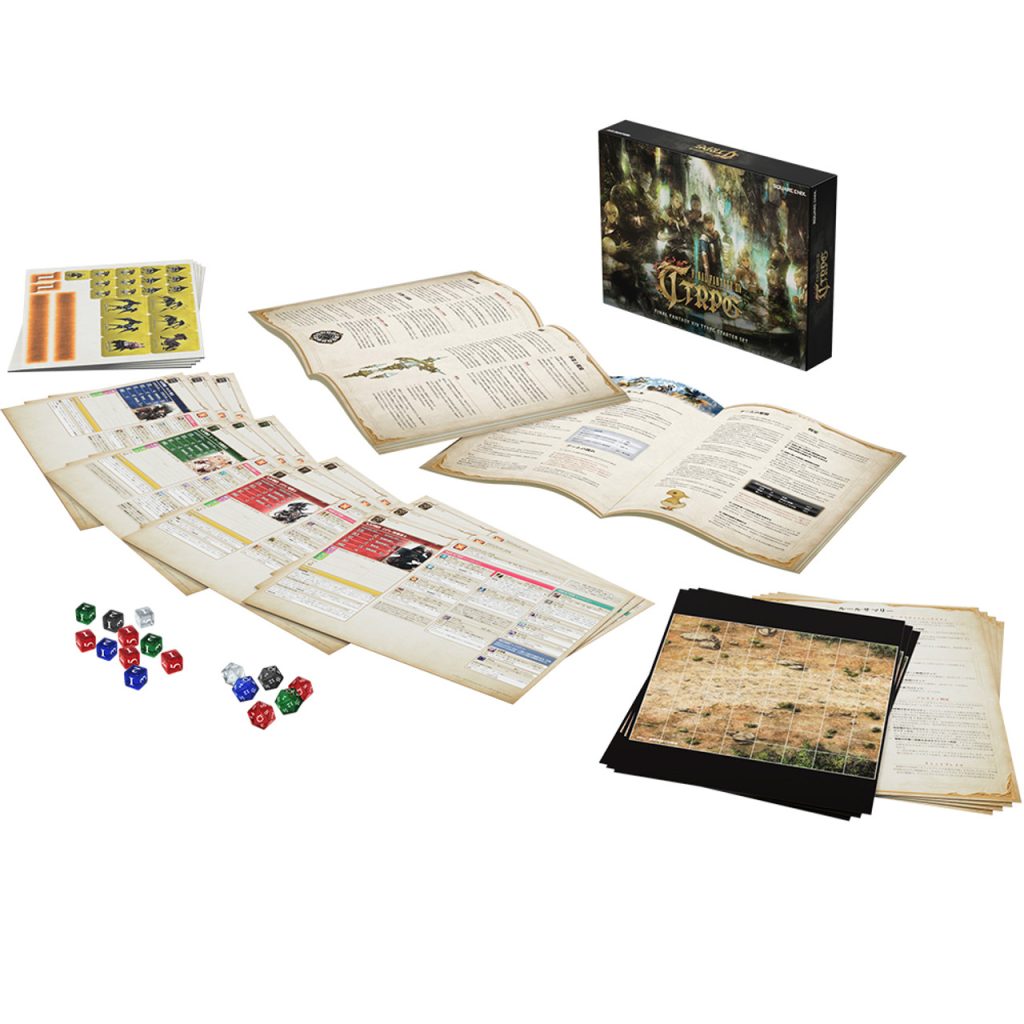
Presentation: 8/10
Honestly, the FFXIV rulebook nails the artwork and presentation of the RPG. As I’ll be saying a lot throughout this review, this feels like FFXIV. From the artwork being reminiscent of Final Fantasy characters, enemies, and setpieces to the items being presented like the in-game inventory of your characters in the MMORPG, this book really nails the appearance aspect that fans of the original game will adore.
The art really sells the book for me. The Starter Kit, should you begin with that, comes with an excellent comic at the bottom of the page where the GM teaches players how to play, alongside more detailed rulings above it. The main rulebook does not have this comic, which is a bit of a shame, but the additional artwork, icons, symbols, and card design are stunning.
However, like many rulebooks, the later pages do suffer from a small amount of “blended paragraph-ism,” i.e. a lot of information without any artwork or interesting boxes to break them up. That’s inevitable if you create a rules-heavy system like these developers wanted, but it does make it a tiny bit harder to read the nitty-gritty topics in later chapters.
The game’s organization could do with some tuning-up as well. Without a wiki, a few situations may arise where you wonder to yourself “okay, but what does this keyword mean?” Within a rules-heavy system, this can get a bit annoying, especially if you read over an explanation earlier on and forget it as the chapters go on. There is a short index with the terms in the back, though, so it’s not impossible to navigate.
Overall, this is a very attractive rulebook for a burgeoning tabletop RPG, and even looks good if you want it as the world’s nerdiest coffee table setup. A great start!
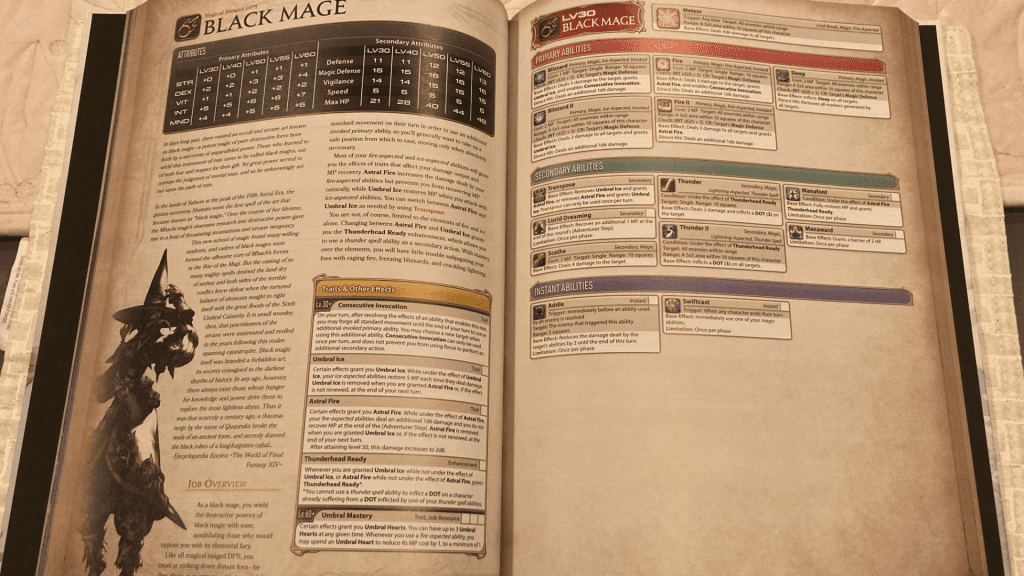
Character Creation: 5/10
Okay, maybe not an excellent start.
Character creation in the FFXIV TTRPG has minimal gameplay impact. Instead, the book focuses purely on your character’s history, personality, and other aspects called Profile Trait and Title. These aspects tie into your backstory and allow for you and your GM to talk about situations where you might have a small advantage or bonuses to stats.
Traits are essentially a specific scenario where you get to roll twice on your d20 and take the better result, while Title benefits range from a hard +3 to a stat to healing slightly during each Phase of combat. Both are referential to FFXIV, and aren’t my favorite things in the world.
I’ve played a lot of TTRPGs where character creation is the key to having fun, and plenty where it’s just flavor that lets you interact with the world as you please. FFXIV is the one of the few that has, unfortunately, the worst of both worlds—character building is given a lot of weight, but isn’t really important. Rolling two dice on hyper-specific topics and receiving a small boost to your stats is relevant to combat or out-of-combat functionality, but in such a minute way that it kinda saps the fun out of it. For example, a Trait can be as specific as getting advantage on investigating townspeople in the morning—not useless, but not exactly character-defining.
Thankfully, the races of the game offer no statistical bonuses. You can play whatever you want, in whatever role you want. As a Pathfinder and DnD 5E fan, it seems like this direction is where the industry is inching toward, but it is refreshing to see a hyper-combat-focused system like this one let you play anyone you desire—a munchkin tank, a big-guy-healer, and everything in-between. Hell, there’s not much stopping you from playing a Moogle or Chocobo, technically.

Combat: 9.5/10
The aforementioned combat, in my opinion, is the most prevalent reason to play Final Fantasy XIV TTRPG. Encounters in this system are dynamic, high-impact, and really, really enjoyable for people like me who like rules.
Encounters begin with players and enemies, typically with the enemies in advantageous positions but players getting the first turn. The adventurers decide their order at the start of combat, and then stick with that order for the rest of the fight—no rolling initiative and hoping you don’t get bodied by the dice. Then, players receive a Primary Action, a Secondary Action, and an Instant Action, the last of which can be done once on any turn, as long as you meet the trigger condition.
If you’ve played DnD, a major difference is you can’t miss an attack in FFXIV. No matter what, attacks will have a reduced but still prevalent effect if you roll below the enemy’s Defense or Magic Defense. For example, while a Warrior deals 1d6+2 damage and applies an Enmity effect that makes the enemy target them on attacking a foe normally, if they miss, they still deal 2 damage and apply that Enmity effect. This makes combat more fun and keeps the battle going.
Since every class has access to this massive pile of utility from the MMORPG, every Job feels dynamic and complicated. Playing a big, strong, beefy Warrior and a magic-slinging Black Mage doesn’t mean one of you is doing very little and the other doing a lot—both do quite a bit in very unique ways, where the Tank has to focus on the battlefield and use their many tools to stay alive and reduce damage, while the Black Mage needs to balance their unique mechanics and defeat enemies quickly.
Honestly, the HOPPY JAPAN tabletop team did a fantastic job translating combat from the MMORPG, in a way that feels rewarding and inviting to new players.
I do, however, have a few small hang-ups with regards to the combat:
- The game struggles with balancing Mana, since new healers may have trouble maintaining their Mana totals over the course of a long fight, but this can be easily remedied by introducing mana-healing items to reward lists at the end of combats.
- There is a Limit Break system, allowing three out of four players to have an instant-cast ability that can deal damage, move you, heal a ton of health, or offer additional utility. This is an absurdly creative interpretation of the beloved video game mechanic…though only allowing three of your four players to do it is a bit sad. As a GM, I usually rule that everyone has access to it and make the encounters a tiny bit harder so everyone can have their time in the sun. To their credit, the the rules emphasize doing things like allow players to build Limit Break by roleplaying their characters well outside of combat, which I do like as an out-of-combat incentive structure.
- Since the classes are based entirely on their mechanics in the FFXIV MMORPG, there is very little chance for player expression when making abilities and adding features to their class—every Warrior will play almost the same, as will every Dark Knight. The opportunity to swap classes on the fly ensures that players will have the opportunity to experience different classes throughout a campaign, but this is little comfort for players who adore systems like DnD 3.5 or Pathfinder 1e, which are designed around character expression and customization.
As long as the previous paragraph isn’t a perfect description of you, you’ll likely find a lot to love when playing FFXIV TTRPG’s combat. It’s a very fun system that helps players and GMs alike get through fights with interesting mechanics.
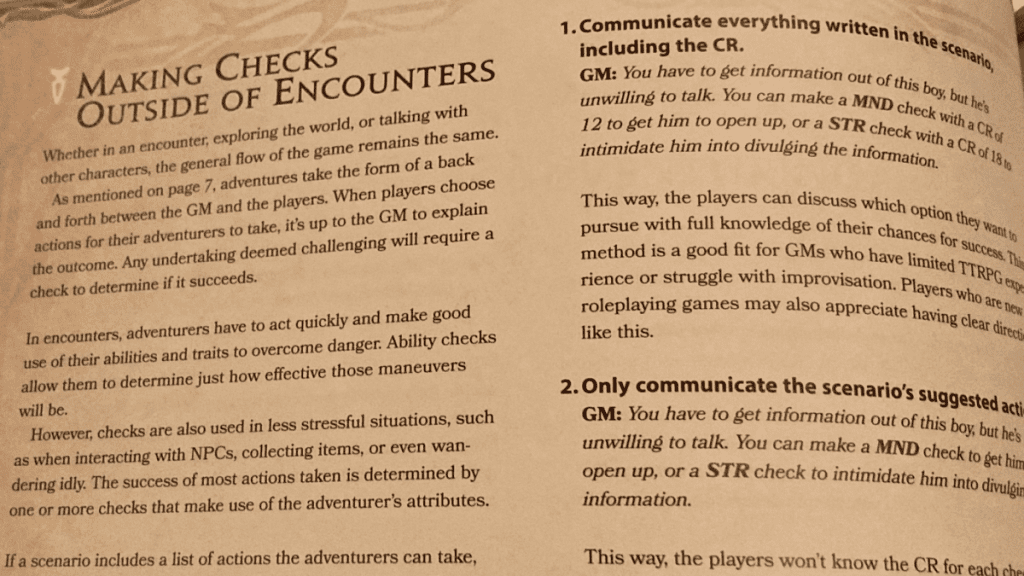
Out-of-Combat: 3/10
In stark contrast to fighting, this system’s out-of-combat capabilities are some of the least restrictive rules I’ve seen in a system with so many rules for combat. The core concept of exploring FFXIV outside of encounters is that you have five stats (Strength, Dexterity, Vitality, Intelligence, and Mind). Roll those in specific situations, or don’t in others. The GM will decide.
The phrase “the GM’s discretion” applies to almost all non-combat decisions made in the FFXIV TTRPG, making it a system that is almost impossible to run without prior experiences running DnD 5E, Pathfinder 2E, or other rules-dense systems. If a player wants to jump over a gap, it’s up to the GM to decide what the initial Challenge Rating (what players need to roll to succeed at a difficult action) is, or if they can use Fire as an explosive jumping aid, or if another player can help toss them across by rolling Strength. It is up to the GM to decide if their Minion’s ability applies, or if their Title or Trait can help them. It’s up to the GM to even interpret if they should use Strength, Intelligence, or Mind to intimidate a townsperson, and if they can use an ability like Flare to give themselves Advantage. The only real aid you get is a chart with a handful of sample Challenge Ratings, from Very Easy to Impossible.
Considering how incredibly structured combat is, the lack of information surrounding what happens during dungeons where you’re not in combat is a bit unfortunate. Having a document with a bunch of examples, like what the Challenge Rating for Jumping should be, or what you should expect to roll when talking with a group of targets, is pretty standard fare for TTRPG rulebooks with this level of rules regarding combat.
This frustration of mine is furthered with the Personal Quests system, a series of downtime activities that players can take between missions—with a DIVERSE and interesting ruleset and Challenge Rating specifications! If there were more examples of this caliber throughout the “Adventuring” section, this would be one of my favorite systems ever.
Instead, the overall experience ends up being a lot of improvisation on the GM’s part the moment a player gets off-script…which they are recommended to do! It’s overall a surprising amount of intellectual labor for a GM who is otherwise guided so carefully through combat.
That being said the book does not skimp out on resources for players who are new to being Game Master. It includes recommendations of how to get a play group together, how to resolve arguments between players, and reminders of how you can get people moving or interested in the system come naturally. The book does a good job helping a brand-new GM come up with ideas through lengthy and in-depth scenarios at the back.

Recommendations: Is The FFXIV TTRPG Good?
The short answer…maybe. It depends on what you’re looking for and your experience with tabletops.
Should I play this game as a new tabletop player who likes Final Fantasy XIV?
Yes! This game gives you a really cool window into tabletop roleplaying. There aren’t many choices to make during character building (the choices you do make are largely cosmetic or just good fun), and combat is familiar and engaging, with no class feeling completely left in the dust. Remaking my online FFXIV character, Pontodour, was a really cool way to engage with FFXIV unlike I’ve ever done before, inventing a backstory for him and wondering what his official title would be.
If you have the time and passion, join the unofficial FFXIV TTRPG Discord group and see if any parties are needing adventurers. The community is passionate, really nice, and ready to help you stand on your own two feet.
Should I play this game as a new GM who likes Final Fantasy XIV?
It depends. I would stick to the book’s listed scenarios if this is your first TTRPG. FFXIV TTRPG has an incredibly structured combat system, but designing your own quests and content will likely lead to headaches. Having the scenarios gives you an okay perspective on how difficult you should make dice rolls, help for roleplaying characters, and a pre-set list of monsters to introduce to players, but be ready to improvise quickly. You have your work cut out for you either way.
As online programs are put into place, I can see this being a passable system for new GMs, like a somewhat more difficult version of DnD 5E, but this is far from my first recommendation.
Should I play this game as a TTRPG fan who doesn’t like Final Fantasy XIV?
If you like TTRPGs, this system has a few wargame-y elements that make combat very, very enjoyable and dynamic for the players while offering the GM some fun tools to make combat explosive and game-like. The rules-heavy parts are legitimately creative and unique—even if you don’t like the MMORPG, the tools players are given make every class a fascinating experience. I’d recommend giving it a look, especially if you like systems where out-of-combat is primarily dictated through roleplaying.
Should I play this game as a TTRPG fan who likes Final Fantasy XIV?
That’s what I am, and as you can see from my review, I have mixed feelings about it!
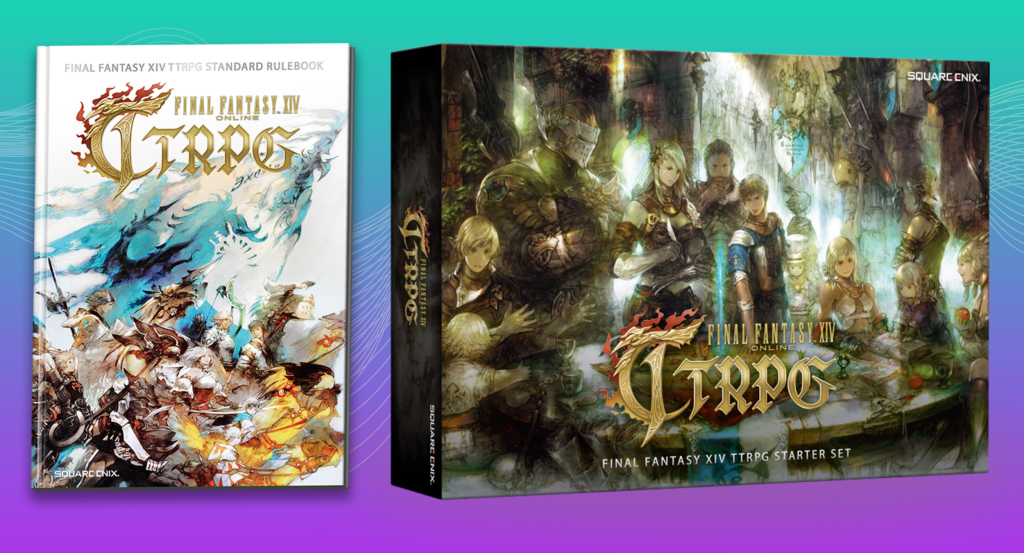
Overall Score: 7/10
FFXIV TTRPG is a fascinating experience, with one of the more impressive combat systems I’ve had the pleasure of experiencing… paired with one of the most frustrating out-of-combat experiences I’ve had to drag a group of players through. It’s a good system for players looking for laid-back character creation that gives them a wide suite of choices right out of the gate, and for GMs ready to flex their performative chops to make that free-flowing combat feel lovely from the word go.
A lot of my worries could be assuaged with upcoming expansions. The book references an upcoming Advanced Rulebook, and a Gamemaster Guide could be exactly what I am looking for as a kit to help a brand-new Game Master find their footing.
Overall, the book is a beautiful choice for fans of Final Fantasy XIV, and, over time, could be an amazing TTRPG rule set as well. I’d look at it with skepticism if you are a brand-new TTRPG player looking to GM your first system, and with excitement if you’re ready to tackle the world of Eorzea across a group of like-minded roleplayers.
The Final Fantasy XIV TTRPG released in two waves, first in May 2024 and then in February 2025. Available from the Square Enix e-store, the Starter Set is $59.99, Scenario and Game Master Guidebook is $69.99, and deluxe editions with game boards, sheets, and kits are $189.99.
Jason graduated from Northeastern University with a degree in English and Game Design. For him, video games are not just an art form, but one of the greatest mediums to tell a story.
When not perpetuating the game journalist stereotype of being awful at a game and blaming the game for it, Jason likes writing short fiction novels that never get past chapter two, and playing Dungeons & Dragons.


